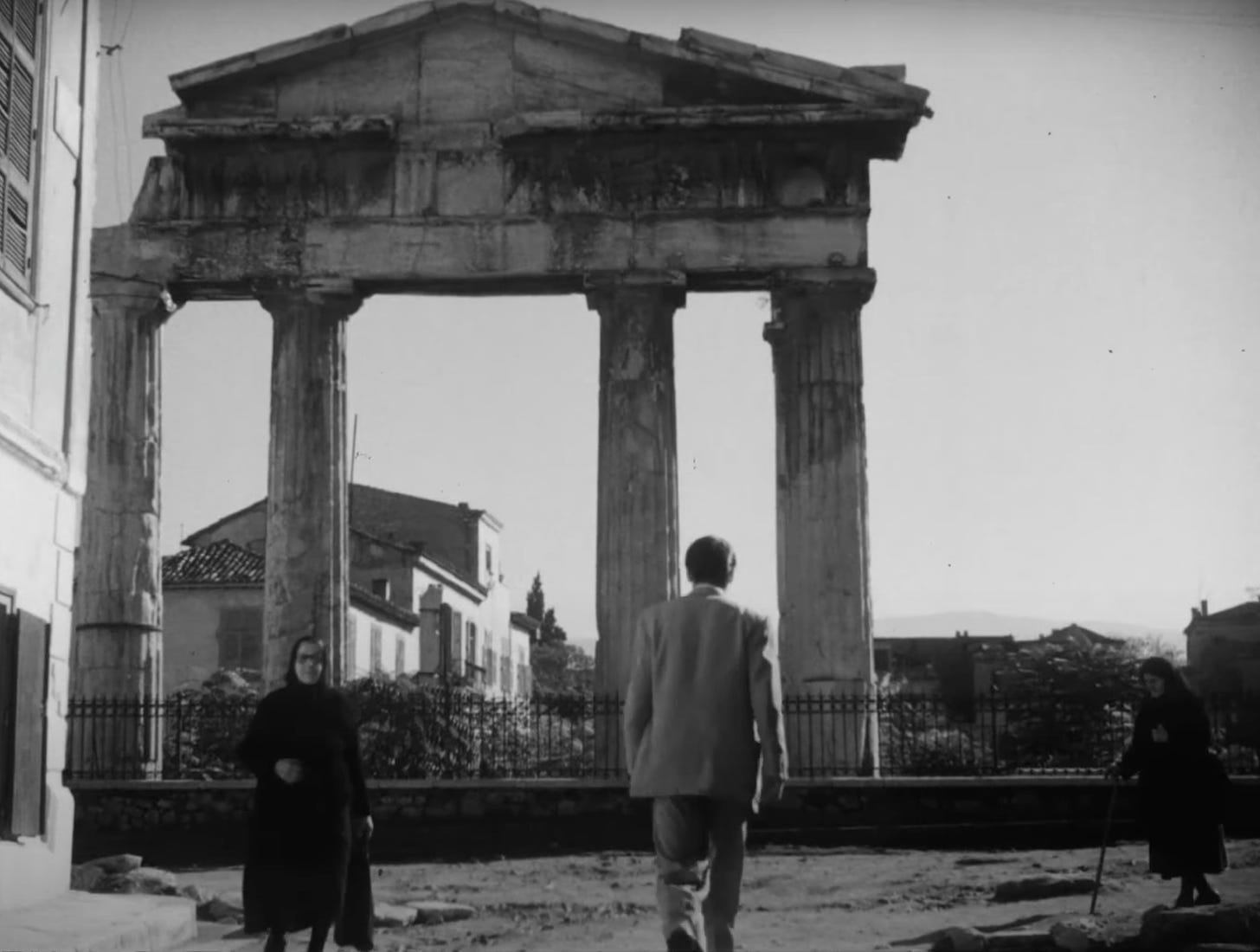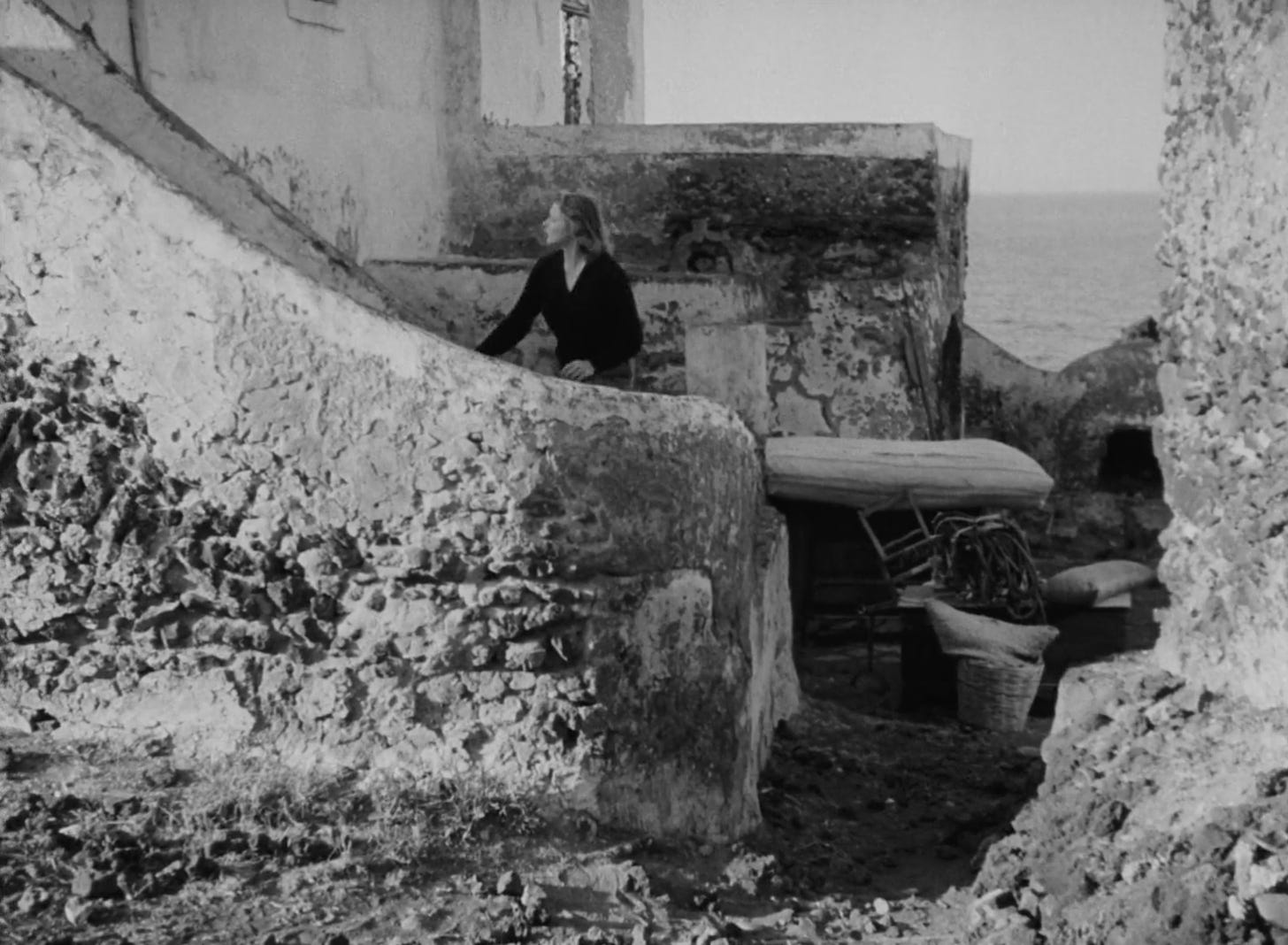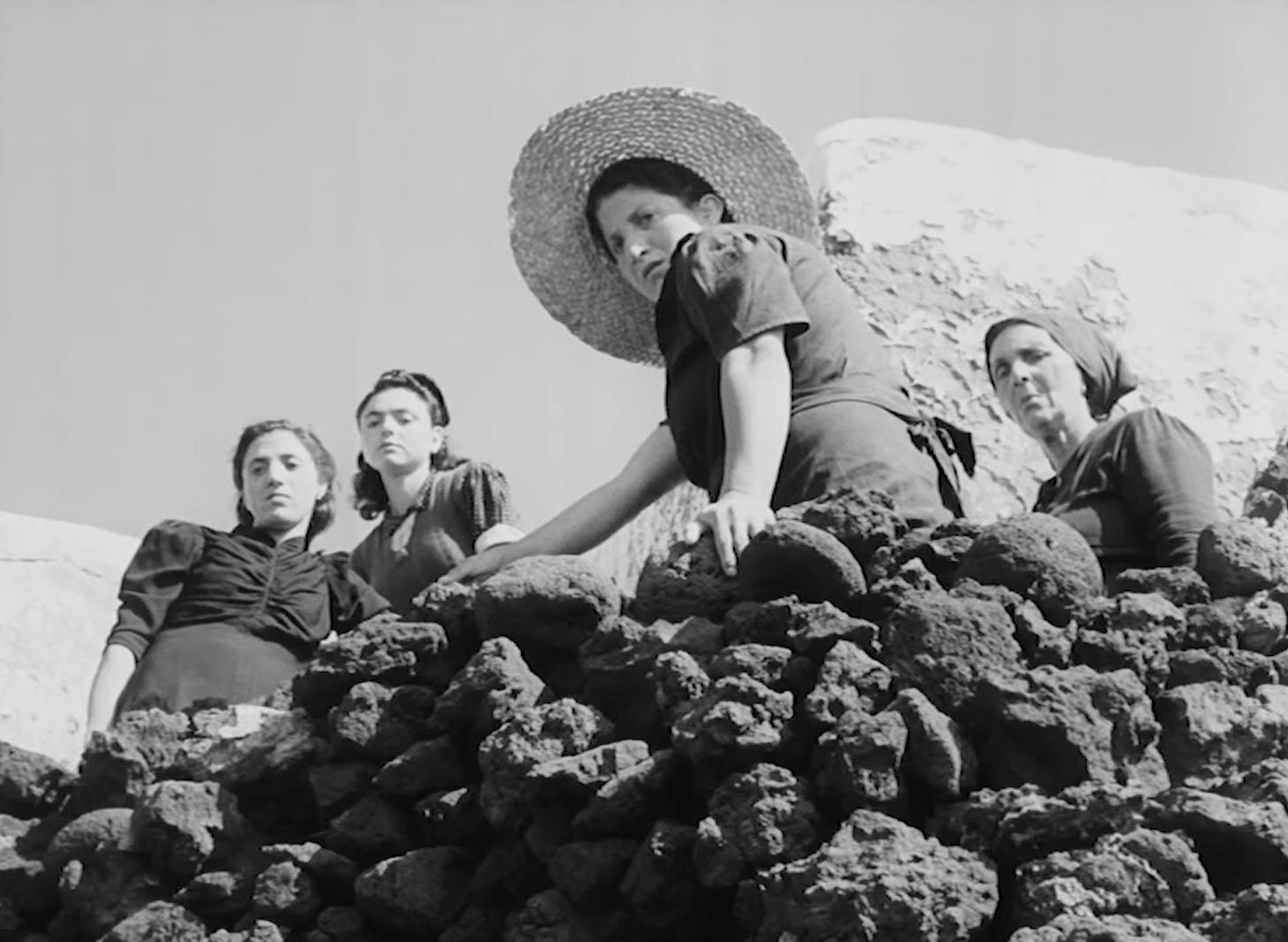#17 Cartolina Dispatch: Towards the Silent Road with Katerina Papanikolopoulos
This special edition of Cartolina celebrates the relationship between Italy, Greece, Film and Music...
The Mediterranean—a sun-drenched expanse of azure waters and ancient landscapes—has long been a cradle of civilization and cultural exchange. At its heart, the shared experiences of Greek and Italian cultures provide a rich tapestry of intertwined histories, artistic expressions, and timeless traditions. Both Greece and Italy boast profound legacies that have shaped not only their own societies but also the broader Mediterranean identity.
For this special edition of Cartolina, we’ve decided to dive into the heart of the Mediterranean through the eyes of a friend of the magazine who we believe shares the same values as us: Greek creative and cultural aficionado Katerina Papanikolopoulos. Papanikolopoulos founded Athens Design Forum, a non-profit advocating for overlooked and generative design histories interwoven with global labor and migration patterns, whose curatorial programming envisions photography and film as integral, critical methodologies to decipher design’s social role, and Mati Grey, an Athens-based creative studio, emphasizing a research-led process to support brand development, communications, image, and identity creation.
Today, when asked about some recurring themes or motifs in Mediterranean cinema, Katerina will guide us through two of her favorite Italian and Greek films — works that resonate with a shared understanding of the Mediterranean spirit. From picturesque landscapes to rich historical tapestries, these recommendations offer a beautiful exploration of the Mediterranean’s cultural and emotional depth.
Stella (1955) by Michael Cacoyannis
Stella (1955) by Michael Cacoyannis is fortified by the passing smile of a woman’s reclusive armor. A breach of love is deathly, with the mourning crowd only a precipice to show when cities were marked by balconies, windows, and alleys that ran like rivers down the belly of the Attican valley. I always recall the passive silence of summer in this film – how the architecture of Piraeus is in movement with the feet of the protagonists. The flower markets appear only after a brief run toward an embrace. We beg to question where the thorns of a season under the sun may appear. Only rapturously through song, love is a double-edged knife (η αγαπη ειναι δικοπο μαχαιρι), a requiem for what continues to be the enigma (or so it seems) (Composer: M. Hatzidakis, Lyrics: M. Kakogiannis, I. Georgakopoulou).
In the last five minutes of the film, we see eyes at a distance, tied only by the assuming landscape that is marked by defined corners, ruins, and architecture that stands yet is dismantled. This is where the human figure appears – desolate. There is a send-off of a new lover, as Stella (the main protagonist) awaits the man she has loved and will continue to love as she sees Miltos in the near distance. She barely whispers his name, and at two crossroads outside of the night venue ‘Paradise’, they inch closer — Miltos’ tie is seen loose and to the side. The last words of warning: “Go Stella, I will kill you”, and she continues to walk towards him. He now comes closer, begging her to change and accept his marriage proposal. A beat and she faces him until he stabs her. She bleeds to death while asking for a kiss. The night venue remains desolate as the windows of the neighbors glare, a sign of impending movement into a circular formation around the wounded body. The chorus (city) mourns Stella's death and questions her integrity as a bewitching figure.
Stromboli (1950 film) by Roberto Rossellini
Five years prior to Stella, Rossellini’s Stromboli holds a novel weight in the depiction and growth of a family and a woman’s singular journey. The barren landscape, heightened by the porosity of the volcanic stone and deathly gales, allows us to empathize with the protagonist, Karin (played by Ingrid Bergman). Two scenes, in particular, we may focus upon: 1. the tuna fishing episode with the traditional tonnara, and 2. the sequences of restoration to Karin’s home with the local craftsman of Stromboli. In the intensity of the fishing episode, we see the physicality of the islands through their laborers – and the rhythmic percussion that ensues to find a successive repetition of movement. This displaces Karin from the island – for although in the depths of the action, she is shielded and knowingly unaware of the landscape she has surrendered to. In hindsight, at the onset of the spatial restoration of Antonio’s (her husband's) home, we begin to see a woman lengthening her arms to redefine the conditions of her life.
The select films represent crucial comraderies between Greek and Italian cinema, for the isolation of women bears its poison, and one leads to death and the other to disillusionment. It is a quest for morality that uses the landscape to represent the internal conditions—a facet we must open our eyes to in its becoming ways.
To end on a beautifully nostalgic note, Katerina also crafted a unique playlist for us, merging Italo-Greek sounds whispering of enchanting landscapes.
“To me, summer is the sweat that runs between a woman’s chest. It is the inconvenience of time – elapsed time, reduction of shadows, and the full glare of a season beginning without inhibition. I still believe the person you encounter in September can only be a growth of someone you already knew. Film and music have played a crucial role in defining this time momentum. For us, within the outdoor Greek cinemas and the soundtracks that follow, fumigated by the audience’s smoke, the film becomes a place of recognition for what was and what will continue to be.”
Name of Stamp: Colossus of Rhodes
Year: 1947
In this edition of Cartolina, we celebrate with this stamp the Colossus of Rhodes, a statue of the Greek sun god Helios, erected in the city of Rhodes on the Greek island of the same name by Chares of Lindos in 280 BC.
Our magazines are available in select stockists worldwide and on our website. We want to hear from you! Reply to this email, leave comments below, or connect with us via our social media channels. If you send us a postcard, we'll hang it on our office walls.
Until the next dispatch,
Elisa, and the rest of the Sali e Tabacchi Journal team.








